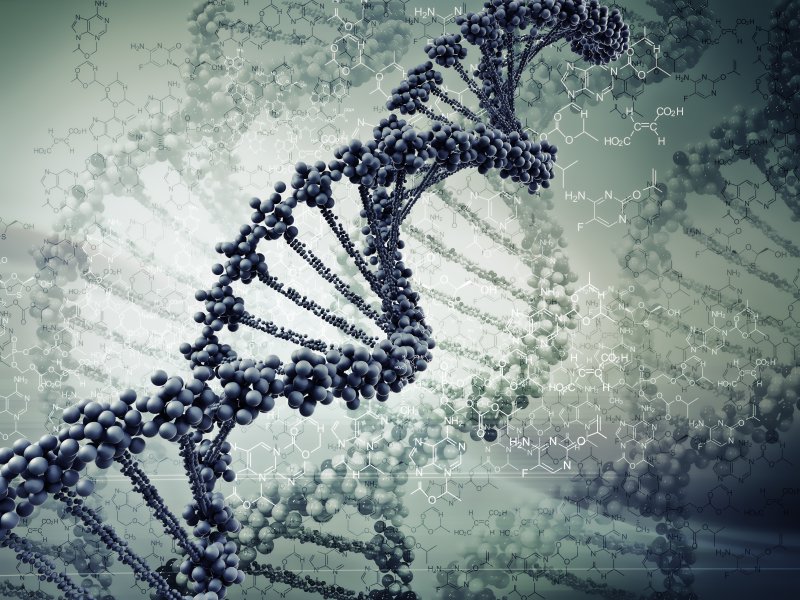One of the biggest hopes when the $3 billion Human Genome Project launched two decades ago was that it would one day put lots of basic genetic information into the hands of the general public. It’s taken a long time, and many argue that the whole project was a waste of money. But in research labs and technology incubators, real advances are underway. The nascent field of consumer genetics is starting to fulfill the potential of the Human Genome Project.
Today we have an astonishingly vast amount of genetic information about ourselves compared to how little was available before the project. It’s comparable to the difference between the abridged, single-volume encyclopedia that came with the 1980s computer game Where in the World Is Carmen Sandiego? and today’s Wikipedia. Or the difference between your first mix tape and iTunes.
For scientists, utilizing this vast repository of genomic information is often likened to sipping from a firehose. The technology to sequence DNA has sprinted ahead so fast and with such precipitous drops in cost that it makes the pace of Moore’s Law look positively slothful. Here at Techonomy, this is the kind of story we love: lightning-fast technical innovation that enables people to effect changes in healthcare, nutrition, and more.
So why isn’t everyone more excited? Because until recently, these innovations have been confined to the lab. Consumers have not seen this avalanche of data affect our day-to-day lives. But today it is starting to happen.
Here are some ways genetic information is already useful to consumers, and a peek at what to expect in the near future:
Ancestry by DNA
Scientists have now studied genetic data from enough populations around the world to detect the genetic signature, if you will, of various groups. Right now, consumers can have their own DNA analyzed and get a report detailing which populations their own genetic makeup most resembles. Sure, your parents probably told you about your ethnic background, but you can now learn a level of detail about your own history way beyond what you can find in any genealogical search. People find it fascinating: Ancestry.com, which started a service this year to study subscribers’ genetic ancestry through DNA, is receiving thousands of submissions each month.

Genetics in cosmetics
Just five years ago, large consumer companies using genomic research to improve products were loath to discuss it publicly. But now the idea that products can be personalized through genetic knowledge has gone from “Frankensteinian” to “cutting edge.” Cosmetics companies, for example, include references in television commercials to having performed gene expression studies—complex analyses of which genes are turned on or off at a specific time or in response to a particular situation—in the design of eye creams and hand lotions. Expensive cosmetic lines offer to use a customer’s DNA sample to provide a personalized skincare regimen. As the price of DNA sequencing falls, expect analysis systems in department stores so average consumers can also get custom recommendations about which products will work best for them.
Genome scans for consumers
The first direct-to-consumer genetics companies launched around 2007. Today, thanks to worries at the FDA and uncertainty about regulations, most of them have left the business. But 23andMe will still scan your genome, now for only $299, and give you an analysis that includes details such as whether you’re likely a night owl or a morning person, whether you can taste bitter foods, or whether you’re a risk-taker. Beyond that, the report will tell you about a range of genetic variants that could play a role in your health, offering somewhat rudimentary findings on whether your risk for diabetes, Parkinson’s disease, or age-related macular degeneration is higher or lower than usual. (It’s rudimentary because our scientific understanding of how genetic variation is linked to the very complex process of disease onset is still so minimal.)
Prenatal/newborn screening
Newborns today are usually screened by heel stick—a simple procedure to get a few drops of blood, used to look quickly for a variety of diseases. In the not-distant future, that test could be replaced by genome sequencing. Today, some hospitals already look at sets of genes (a fraction of the full genome) in studies of newborns. Just this year, scientists proved they could use circulating cells in a mother’s blood to sequence the genome of a fetus during pregnancy. While that’s still in the research stage, it points to the long-term possibility of making genome sequencing a routine part of prenatal care. There are also companies today that can screen prospective parents to determine which diseases they may be able to pass on to children, even predicting what “virtual” children might look like, genetically speaking.

Identifying rare diseases
This is where scientists thought genome sequence would be most promising, and though the field is still young, success stories are emerging. In a number of cases, teams of doctors have been able to sequence the genome of a patient with a completely unknown disease and either get a correct diagnosis—in many cases after the patient has lived for years with the wrong diagnosis—or identify a condition never before been characterized. (The recently reported Ogden Syndrome is one example.)
Though we’re only beginning this genomic era, genetic information is already making a difference in the lives of consumers.
Meredith Salisbury, a senior consultant for the life science communications firm Bioscribe, covered the genomics field as a journalist for more than a decade. She is a co-founder and organizer of the Consumer Genetics Conference.

















